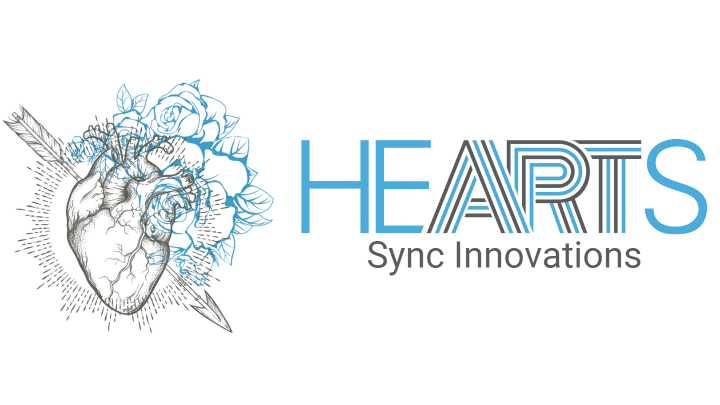In 1932, the physiologist Marianne Frankenhaeuser significantly influenced how we measure and understand stress. As a pioneer of psychoneuroendocrinology, she demonstrated that performance and emotion are inseparably linked to biological stress responses. This perspective today opens a door to a new strength for highly sensitive individuals: those who perceive subtle signals earlier can navigate more wisely. Rather than being “too much,” sensitivity becomes a precision sensor for energy, focus, and creativity.
High sensitivity describes an increased responsiveness to stimuli, social moods, and bodily signals. It is not a defect, but a neurobiological temperament with intensive processing. Central to this is the autonomic nervous system, which oscillates between Sympatheticactivation branch – mobilizes energy, “gas” and Parasympatheticregeneration branch – calms, “brake”. The fine-tuning is reflected in heart rate variability (HRV)natural fluctuation between heartbeats; higher is considered a sign of better adaptability, respiratory sinus arrhythmia (RSA)breathing-related pattern of HRV, increases during relaxation, and baroreflex sensitivityability to quickly compensate for blood pressure fluctuations. Highly sensitive individuals particularly benefit from strategies that strengthen the “brake” without losing drive. This is exactly where breath-controlled training comes in: slow, even breaths with emphasized exhalation increase vagal tone, stabilize internal balance, and sharpen cognitive control.
Those who train their autonomic flexibility experience measurable effects: studies on slow breathing and HRV biofeedback consistently show higher HRV values, especially in the high-frequency range, which is associated with parasympathetic activity [1]. Increased RSA and improved baroreflex sensitivity are associated with a calmer pulse, more stable breathing, and faster recovery after stress [1]. For high performers, this means less energy loss due to over-arousal, clearer thinking in meetings, and better decision quality under pressure. One study also reported synchronization between heart signals and cortical potentials during slowed breathing – an indication that bodily rhythm and brain activity cooperate better [1]. The result is not “relaxation inertia,” but an adaptive state: quickly accelerating, precisely braking, and staying focused.
The evidence landscape is becoming more consolidated: a scoping analysis of several studies involving healthy adults examined slow breathing and HRV biofeedback in acute sessions and over weeks of trained protocols. Overall, significant increases in HRV were found, especially in the HF band, indicating enhanced vagal tone and better stress regulation [1]. Protocols emphasizing exhalation particularly increased RSA, suggesting that exhalation guidance is an effective lever for parasympathetic activation [1]. When biofeedback complements breathing, baroreflex sensitivity also improves – a marker for cardiovascular adaptability that provides stability under mental load [1]. Notably, the finding of neural synchronization between heart rhythm and cortical activity under slow breathing suggests a physiological bridge between interoception and cognitive control [1]. For highly sensitive individuals, this means a trainable system that organizes emotions without dampening intensity – it channels them.
- Implement a 5-minute reset before key tasks: 4–6 breaths per minute, exhaling twice as long as inhaling (e.g., 4 seconds in, 8 seconds out). Goal: noticeably calmer pulse, lighter chest. This slow breathing increases HF-HRV and RSA – signs of greater parasympathetic activity [1].
- Practice "Exhale Bias" in everyday life: while walking, 3 steps in, 6 steps out. This emphasis on exhalation strengthens the vagal brake and improves autonomic flexibility [1].
- Use HRV biofeedback 3–5 days a week for 10 minutes: align breath rhythm in real time for coherence (calm, regular waveform). Combined with slow breathing, this strengthens the baroreflex and stabilizes cardiovascular responses under stress [1].
- Acute strategy for sensory overload: close your eyes, relax your tongue against the roof of your mouth, and perform 6 long exhales in succession. Only then decide or speak. The brief lowering of arousal improves cognitive clarity [1].
- Build a 4–8 week routine: daily 8–12 minutes of slow breathing, ideally in the morning or before challenging appointments. This will help solidify the chronic adaptations observed in studies – higher HRV, better stress resilience [1].
Breath-controlled self-regulation is becoming more precise, personalized, and digitally measurable. With improved biofeedback algorithms and standardized protocols, it is expected that highly sensitive individuals will be able to transform their emotional intensity more effectively into focus and creativity. The next wave of research is likely to clarify how individual breathing patterns optimize performance, recovery, and longevity in the long term.
This health article was created with AI support and is intended to help people access current scientific health knowledge. It contributes to the democratization of science – however, it does not replace professional medical advice and may present individual details in a simplified or slightly inaccurate manner due to AI-generated content. HEARTPORT and its affiliates assume no liability for the accuracy, completeness, or applicability of the information provided.












